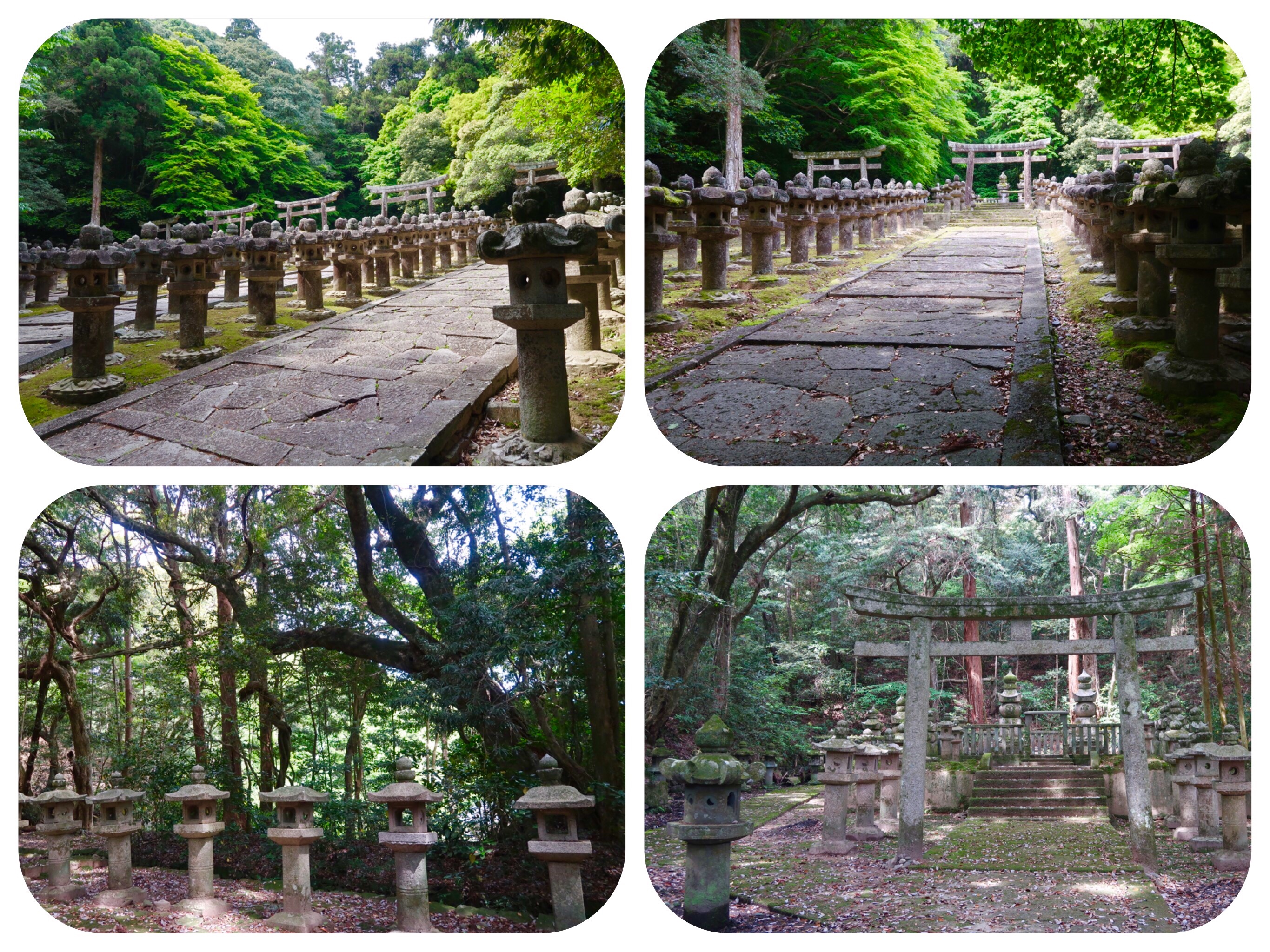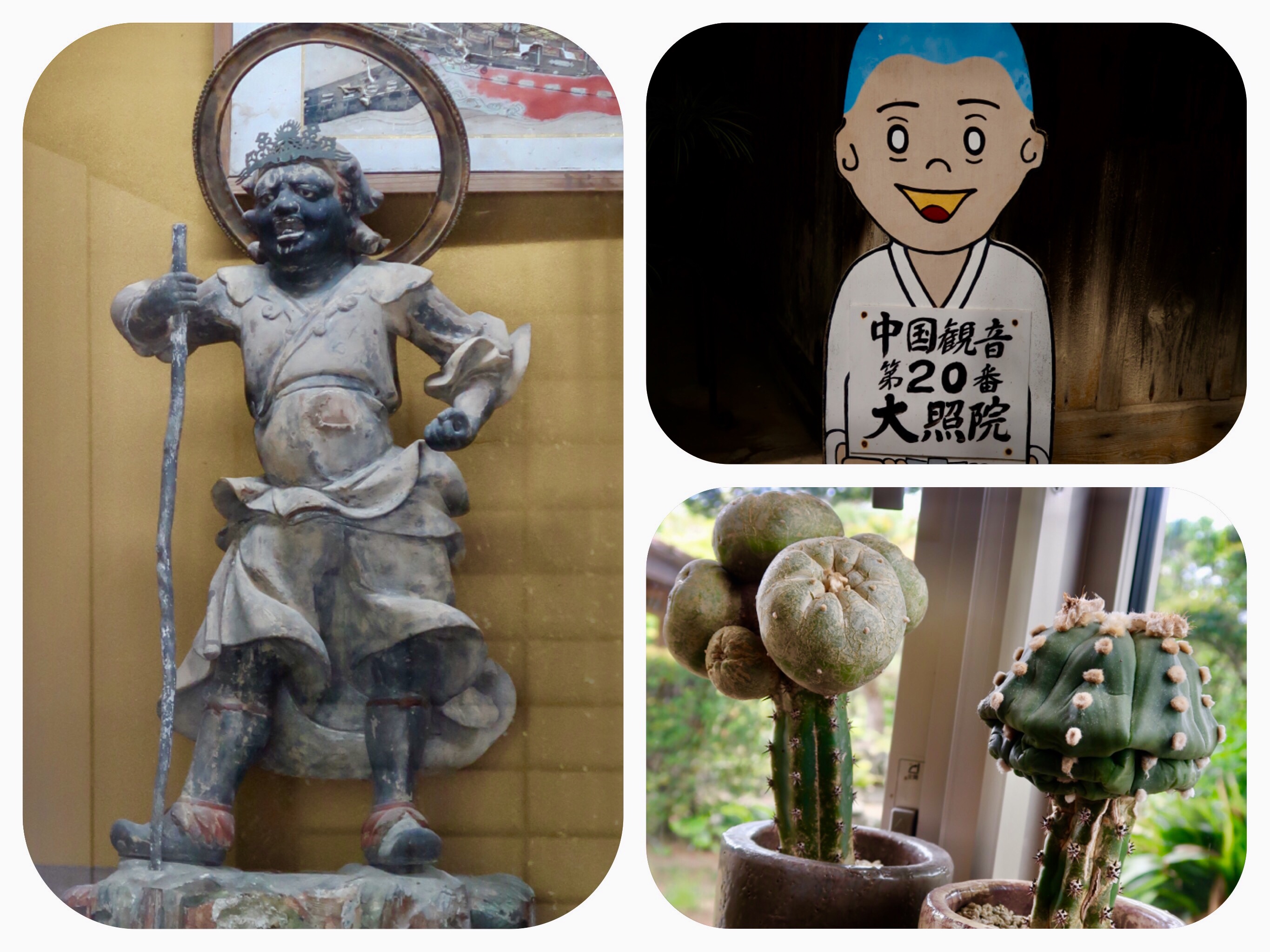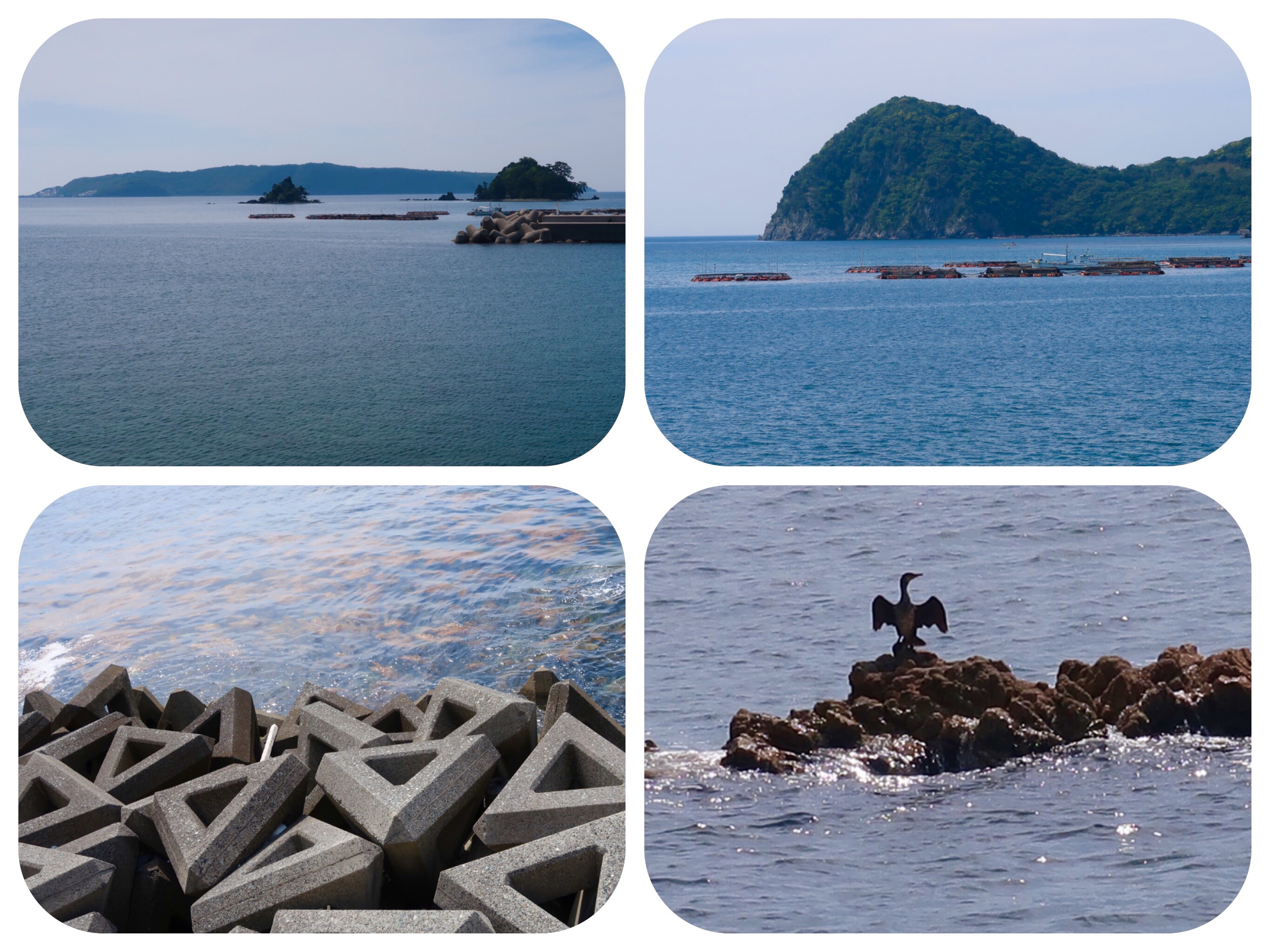Day 35 - The Chūgoku 33 Temple Kannon Pilgrimage, Japan - Visiting Daishōin, Temple #20, in Hagi, and walking from Hagi to Abu City





















Day 35 - The Chūgoku 33 Temple Kannon Pilgrimage, Japan - Visiting Daishōin, Temple #20, in Hagi, and walking from Hagi to Abu City
I really like the city of Hagi.
It is a fairly large city, but it has no tall buildings.
All the houses still lay on the original, wide street grid, that was designed in the early 1500’s.
The sea on one side and the wide rivers on the other side, create almost a natural moat around this old castle town.
The old castle has been destroyed and was never rebuilt.
But the old residences, with their glorious Japanese gardens, edged with low walls and wooden gates, are all still intact and are beautiful.
After a lovely Japanese vegetarian breakfast, we walked through the well preserved city to Daishōin, temple #20 on our pilgrimage.
It was early morning and the streets were quiet.
Our intention was to visit the temple, and then walk farther along the sea, going north towards Masuda.
We had left ourselves three days to walk the distance to Masuda, which is 65 kilometers north of Hagi.
Even as we approached the slopes of the hill on which the temple is located, we could not see the temple.
It is hidden by bamboo, and by a forest of old trees.
The wooden front gate is being renovated and we had to enter by a side stairway.
Inside the temple’s grounds, the buildings seem like they are in need of a lot of renovation.
We left our scroll and pilgrim’s book with the lady at the office, and walked around the temple.
The main hall was closed with sliding Shoji doors that were still lined with rice paper, the way they used to do it in Japan in the old days.
We slid open the door and stood in front of the altar.
We lit incense, chanted the Heart Sutra and said our prayers.
Then we walked into the forest, to see the hundreds of stone lanterns that dot the forest.
This temple is known as “The world of lanterns,” many of them dating from the 1500’s.
The temple belonged to the Mōri ruling family, who ruled over ten clans in the Chugoku region.
The temple was placed in a base made of 369,000 stones, all chiseled and moved by hand.
The temple was burnt down in the 1600’s, and was raised back up only 4 years later.
It has stood here since, witnessing many wars and thirteen different feudal lords for about 260 years before the Meiji Restoration.
It is said that the Mōri family expanded a temple that had already stood on these grounds, which originated in the Enoki period (782-805).
Many of the Mōri lineage who have passed away, are enshrined in this temple and in Tōkōji Temple, on the eastern slopes overlooking Hagi.
It is believed that their spirits can sleep quietly, because they are protected by this amazing collection of 603 stone lanterns.
Every year on August 13th and 14th, at the "Wankai Obon Festival,” the flames that are lit in these old lanterns produce a mysterious, otherworldly glow that lights up the night in the forest.
According to Japanese Buddhist tradition, the spirits of one’s ancestors are honored during the Obon Matsuri in the summer.
Hagi’s Lantern Festival is held in the two family temples of the Mōri clan, at Daishōin Temple, and at Tōkōji Temple.
From Daishōin temple, we walked to a lovely café and gallery.
The café is located in a lovely restored house.
The owner took us outside to see her beautiful garden.
She explained that her café and gallery are one of the residences located on a small canal, and that we can walk along the canal and visit other house gardens.
Her garden was a beautiful Japanese garden, and I mentioned to Jules how harmonious this way of living is to me.
In many places around Europe and the Americas, people focus on building the biggest houses possible on their land, with lots of square footage, and many bedrooms and bathrooms.
These old Samurai era residences have modestly sized houses, and stunning gardens that are usually enclosed with a wall that has clay roof tiles and a wooden entrance gate.
At the café, the owner made us a delicious set lunch, which included roasted pumpkin and egg salad sandwiches, a salad, a pot of Earl Grey tea and a small dessert.
After lunch, we started walking towards another temple in Hagi, that I had marked on my map.
By soon we realized that I had made an error on our Temple List, and that this temple was not part of our pilgrimage.
In fact, there are only two temples in Hagi listed on our pilgrimage, not three.
Relieved that we did not walk all the way there and back, we instead started to walk north, to reduce the distance remaining from Hagi to Masuda.
Most of the walk was along the beautiful coastal road, which we shared with the car traffic.
But we always had good sidewalks to walk on.
The sun was very strong and we had no shade.
But it was very scenic indeed.
Our first impression of the northern coast, was that it was much less industrialized than the southern coast, and it continues to be true.
Despite the car traffic on the coastal road, it was still a picturesque walk.
We got very tired by the end of the walk.
Maybe it was the sun and the heat or just the hours standing on our feet.
It was also getting late, and we saw the sunset sending long rays along the sea.
We returned to our hotel just in time for our dinner, at 7:30PM.
We were very pleasantly surprised that they served us a vegetarian Japanese dinner in our private dining room.
The Kaiseki dinner included a creamy sesame tofu, Konyaku sashimi, noodles Chawan, and potato gratin, among other dishes.
This is a big hotel with a hundred rooms, but the service they give you makes it feel like a small Ryōkan.
Each couple dines alone in quiet private rooms and breakfast is not a buffet, but is served in communal rooms that are small and accommodate only eight tables.
When we asked for the schedule of the hotel’s shuttle bus to return tomorrow to continue our walk towards Masuda, we were told that they will take us at whatever time we wanted to go.
After soaking in the hot springs, I sat in one of the Japanese massage chairs.
Somehow the Japanese have mastered the art of massage chairs, and it was very relaxing to allow the chair to soften my neck and back muscles.
With love, gratitude and harmony,
Tali
Daily Stats:
Steps: 37,299 steps
Distance Walked: 27.5 Kilometers
Active Walking: 6.5 hours
Total Time: 10 hours
Total distance walked on the pilgrimage so far: 714.5 Kilometers
Temple Visited: Daishōin, Temple #20
Accommodation: Senshunraku Hagi Onsen Ryokan
A large Hot Spring hotel, with spacious Tatami mat rooms, serving good dinners and breakfast.
Has a nice salty indoor and outdoor hot spring pools.